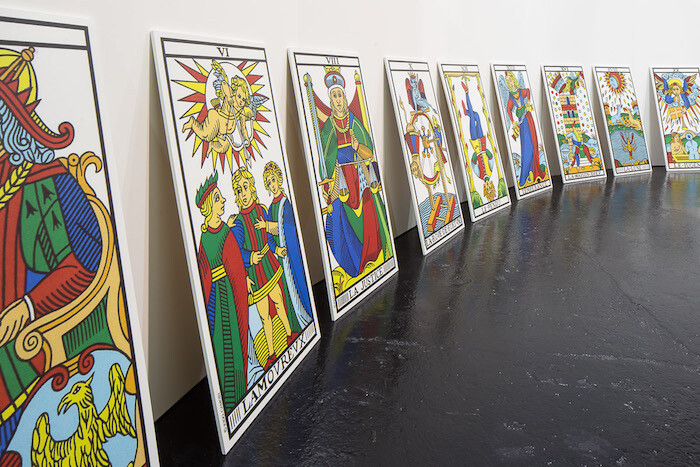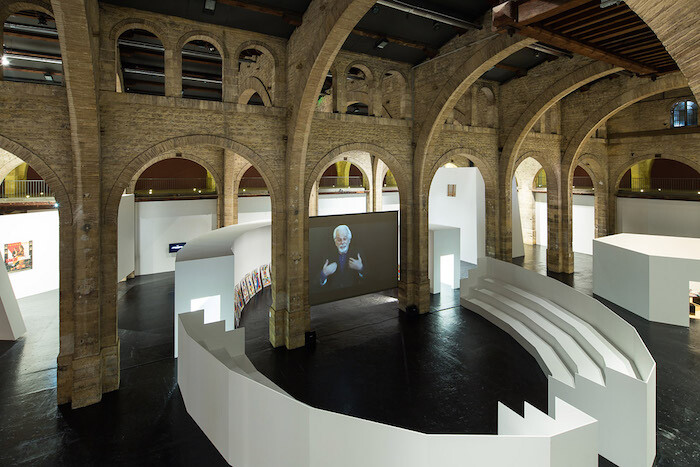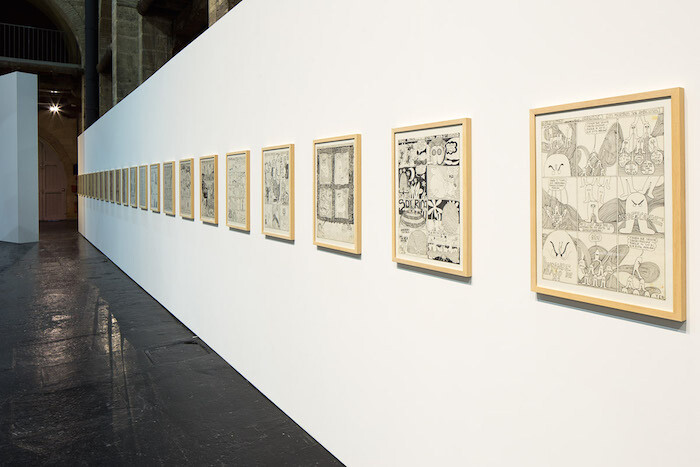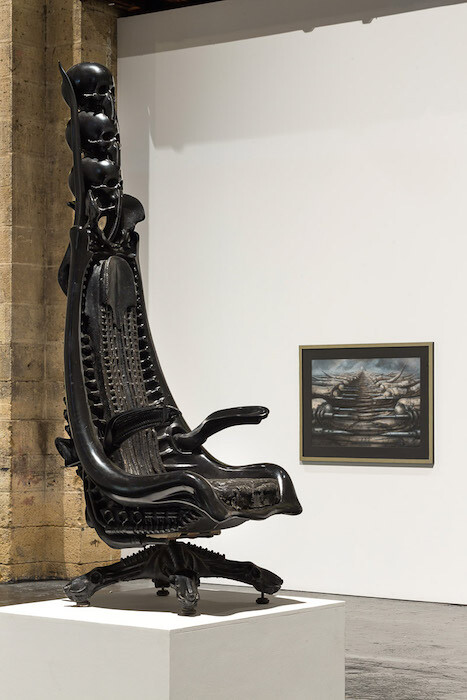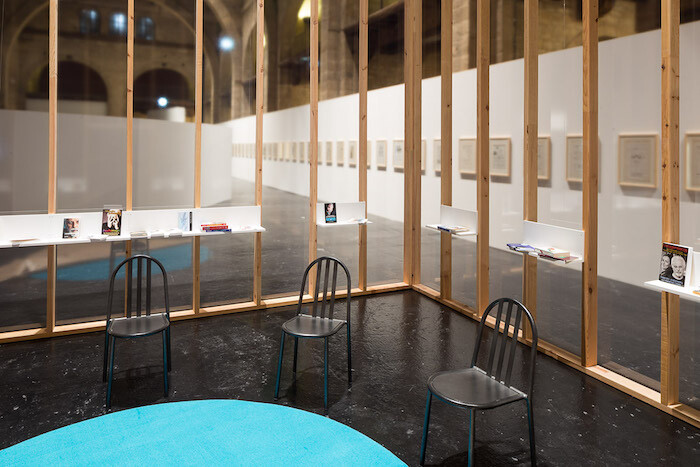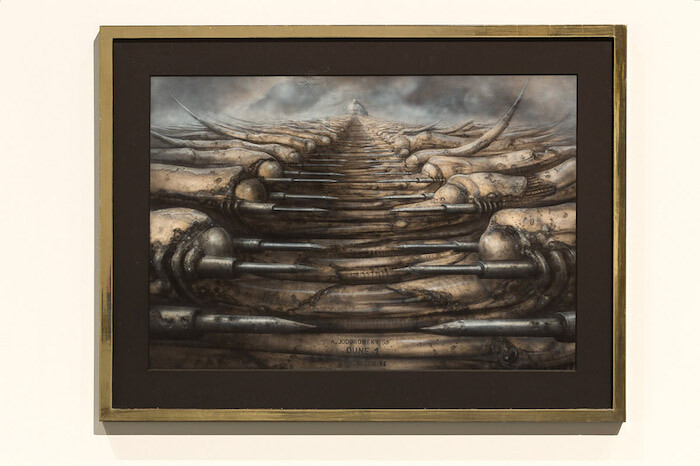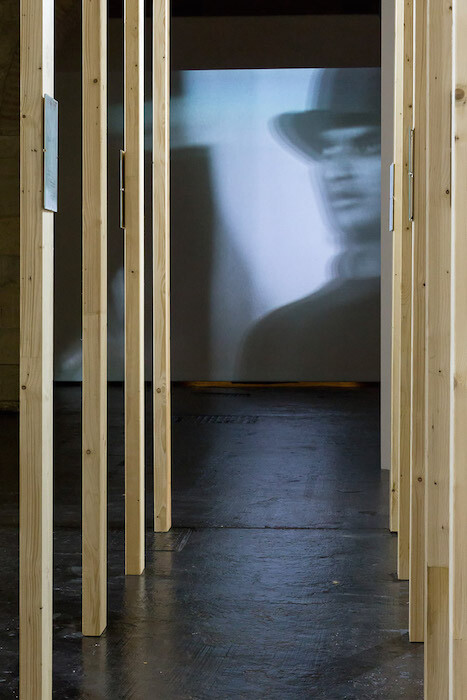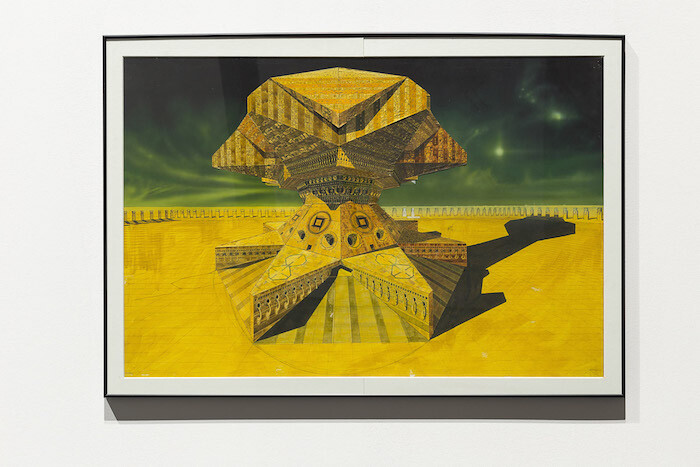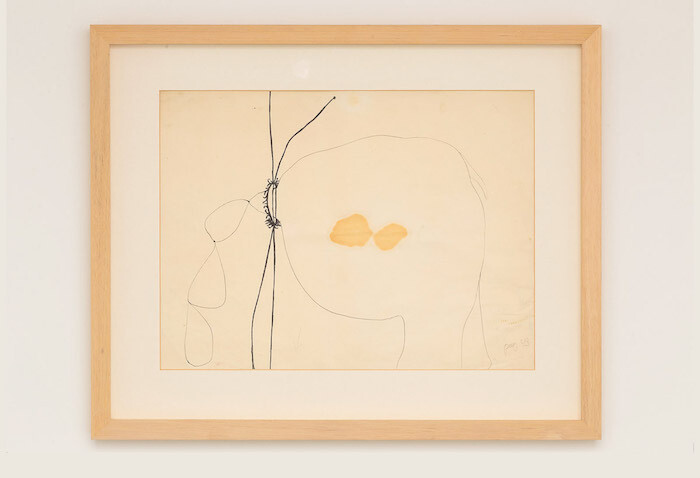Now that curators have pulled and stretched the contemporary art exhibition to its full elastic potential, now that the contemporary art institution is conceived as the pluralistic host for any sort of artistic practice whatsoever, now that exhibitions can take place anywhere at any time and simultaneously offer the widest variety of experiences aesthetic and otherwise, it’s easy to lose sight of the mediating frame an exhibition can offer in its reciprocal relationship with an audience. It seems like more and more exhibition makers presume visitors are simply brimming with unfettered curiosity and are flexible enough to contort into whatever states of sensory receptivity their projects require. As the art exhibition inclusively widens its purview, it risks losing its specificity altogether. Given this, it’s both a perfect time to schedule an Alejandro Jodorowsky exhibition and to ask why the Chilean director, actor, spiritual guide, and author would need an exhibition at all? In arty circles he’s surely best known for his radically inventive films, El Topo (1970), The Holy Mountain (1973), and Dune (1975) while some claim he’s the man for whom the term “cult movie” was coined. Representationally speaking, what can an exhibition add to his lifetime of multi-form artistic and psychomagical productions, except affirm and possibly legitimize the fact he intrigues the contemporary art world?
Jodorowsky, his wife Pascale Montandon-Jodorowsky, and Maria Inés Rodriguez (director of the CAPC musée d’art contemporain) wondered some of the same as they embarked on this collaboration, and thankfully so. For it turns out that a thoughtfully conceived, carefully selected, and dynamically installed exhibition like this one can still accomplish a lot, especially when it comes to a heterogeneous body of work of this scale. It helps when you have an impressive old stone customs depot for a building and you hire architect Andreas Angelidakis to transform the spectacular central nave into a collection of pathways and whitewashed dwellings and structures, each named after a Major Arcanum of the Tarot deck. Jodorowsky has not only studied Tarot for decades, he lectures on Tarot, conducts Tarot readings, and worked with a descendent of the Camoin printing family to research and reconstitute the lost “Tarot de Marseille” deck, the only one he uses.
Tarot emerges here as a sufficiently opaque guiding principle, which is apt, since like this quasi-retrospective, the Tarot must be read and its reading is a joint endeavor. I embarked on this exhibition via the arcanum “The Fool,” basically a long wall with a linear hanging of Jodorowsky’s early satirical comics Las Fábulas Pánicas (1967-73). Then I entered “The Chariot,” a corridor’s worth of fascinating documentation from Jodorowsky’s theater experiments in Paris and Mexico in the 1950s and ‘60s, including rare footage from the performance art group Mouvement panique, and projects with Leonora Carrington, amongst others. This is an exhibition that abounds with rare and hitherto unseen archival material—my tongue-in-cheek favorite is a review from an early New York screening of El Topo, I think, which after brief mention of the film focuses mainly on dining options around the cinema. Apart from a few of Jodorowsky’s original film scripts, bombastically presented as closed tomes sealed in individual Plexiglas vitrines, the preciousness of the archival material is not overemphasized. In fact, the original documents sit rather companionably with the mass-produced and distributed material (including a gigantic set of Tarot cards) also included in the exhibition.
A cinema-sized screen nestled in a bespoke arena (“The World”) bisects the very center of the nave. Trailers for and footage from some of Jodorowsky’s best-known films loop on the screen, while the neighboring hexagonal structure, “The Moon,” serves up scores of hardcover science fiction comic books (a realm in which he is also a legend) that testify to Jodorowsky’s countless collaborations with the most renowned illustrators, including Moebius (The Incal [1981–2014]) and Zoran Janetov (The Technopriests [1998–2006]). A simple frame structure with transparent plastic walls (“Temperance”) houses a circular seating arrangement and a collection of Jodorowsky’s other publications, including The Way of Tarot, Psychomagic, and The Spiritual Journey of Alejandro Jodorowsky. Suffice to say, there’s more than enough in this exhibition to satiate every sort of Jodorowsky fan and to instruct those, like me, ignorant of the range and scope of his accomplishments.
Even though this exhibition is simply titled “Alejandro Jodorowsky,” it offers communal gathering places rather than isolating individual works, while granting so much credit to creative partners past and present that Jodorowsky comes across as a remarkably ego-less agent provocateur. That one of those partnerships eclipses all others is evident in the delightful series of “common works” (2009-present) signed pascALEjandro, which consist of crisp ink drawings by Alejandro that his wife Pascale colored with bright jewel-toned watercolor tints. Their universal themes of love and sex and aging and death amongst humans and creatures and plants and objects are tenderly depicted; sometimes they hum with the undercurrent of critique and violence explicit in Jodorowsky’s earlier work. I don’t want to appear too sentimental, but the shared intimacy of those drawings, coupled with the nearby flat-screen offering up “365 Tweets d’Amour,” a year of Jodorowsky’s tweets dedicated to Pascale, left me with the inkling that, more than anything, this exhibition’s appreciable surplus might just be love.


